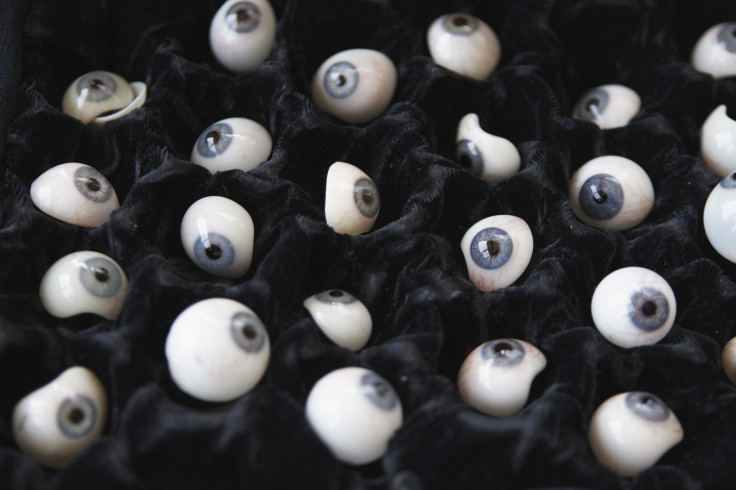Eye staring can cause ‘out of body’ experiences, alter person’s state of consciousness

A 10-minute eye contact led people to hallucinate and see deformed faces and monsters in their partner’s face, according to a new report. Volunteers experienced dissociation process without being induced by any mind-altering drug.
Giovanni Caputo, a psychologist from the University of Urbino in Italy, found a new way to induce a drug-free altered state of consciousness through an eye-contact experiment. Caputo asked 20 volunteers to sit and stare into each other’s eyes for 10 minutes straight.
In the experiment, 15 young adult women and five men paired off in a dimly lit room to look to each other’s eyes within the given period. The room lighting was bright enough for the pairs to distinguish each other’s facial features from a one-metre distance. However, the light was low enough to weaken their overall colour perception.
Another group of volunteers in pairs were also asked in a different room to do the 10-minute sit-and-stare activity with the similar ambiance, but their chairs were facing a blank wall. Caputo, who ran the experiment, told the volunteers very minute detail about the purpose of the study. H only disclosed that it was about a "meditative experience with eyes open.”
After the uninterrupted 10-minute staring activity, the volunteers answered questionnaires about what they have experienced during and after the experiment. The first questionnaire asked both groups about any dissociative symptoms that they might have experienced. The second questionnaire were divided for the two groups, one focused on what the eye-staring group saw in their partner’s face, and the other asked the control group, who were facing the wall, what they saw on their own face.
The report, published in the journal Psychiatry Research, says on the eye-staring questionnaire, 90 percent of the eye-staring group said they had seen deformed facial traits, 75 per cent claimed they had seen a monster, 50 per cent saw aspects of their own face in their partner's face, and 15 per cent had seen their relative's face. The result shows staring into another person’s eyes for uninterrupted 10 minutes causes dissociation.
"The participants in the eye-staring group said they'd had a compelling experience unlike anything they'd felt before," Christian Jarrett wrote for the British Psychological Society’s Research Digest. Psychologists describe dissociation as a whole range of psychological experiences that make a person feel detached from their immediate surroundings, or simply an “out of body” experience. Dissociation is commonly linked to loss of memory, seeing everything in distorted colours, or feeling like the world isn’t real.
Dissociation is commonly caused by abuse, trauma and drugs such as ketamine, alcohol and LSD. In the new finding, however, face-staring is added to the factors that bring the psychological effect.
In 2010, Caputo already performed a similar experiment with 50 volunteers staring at themselves in a mirror for 10 minutes. Caputo reports in the paper, titled Strange-Face-in-the-Mirror Illusion, that after less than 10 minutes the volunteers experienced the "strange-face illusion."
"All 50 participants reported feelings of ‘otherness,’” authors Susana Martinez-Conde and Stephen L. Macknik wrote for Scientific American. The volunteers said they saw huge deformations of their own faces, faces of alive or deceased parents, an old woman, child or the portrait of an ancestor, animal faces such as a cat, pig or lion and even fantastical and monstrous beings.
Comparing the results of the two experiments, Caputo said the effects were stronger than those experienced by the 2010 mirror-staring volunteers. Martinez-Conde and Macknik said the dissociation effect has likely to do with neural adaptation, or the process which neurons slow down or even stop their response to unchanging stimulation. The process happens when a person stares at anything which his or her perception will start to fade until he or she blinks.
Contact the writer at feedback@ibtimes.com.au or tell us what you think below





















